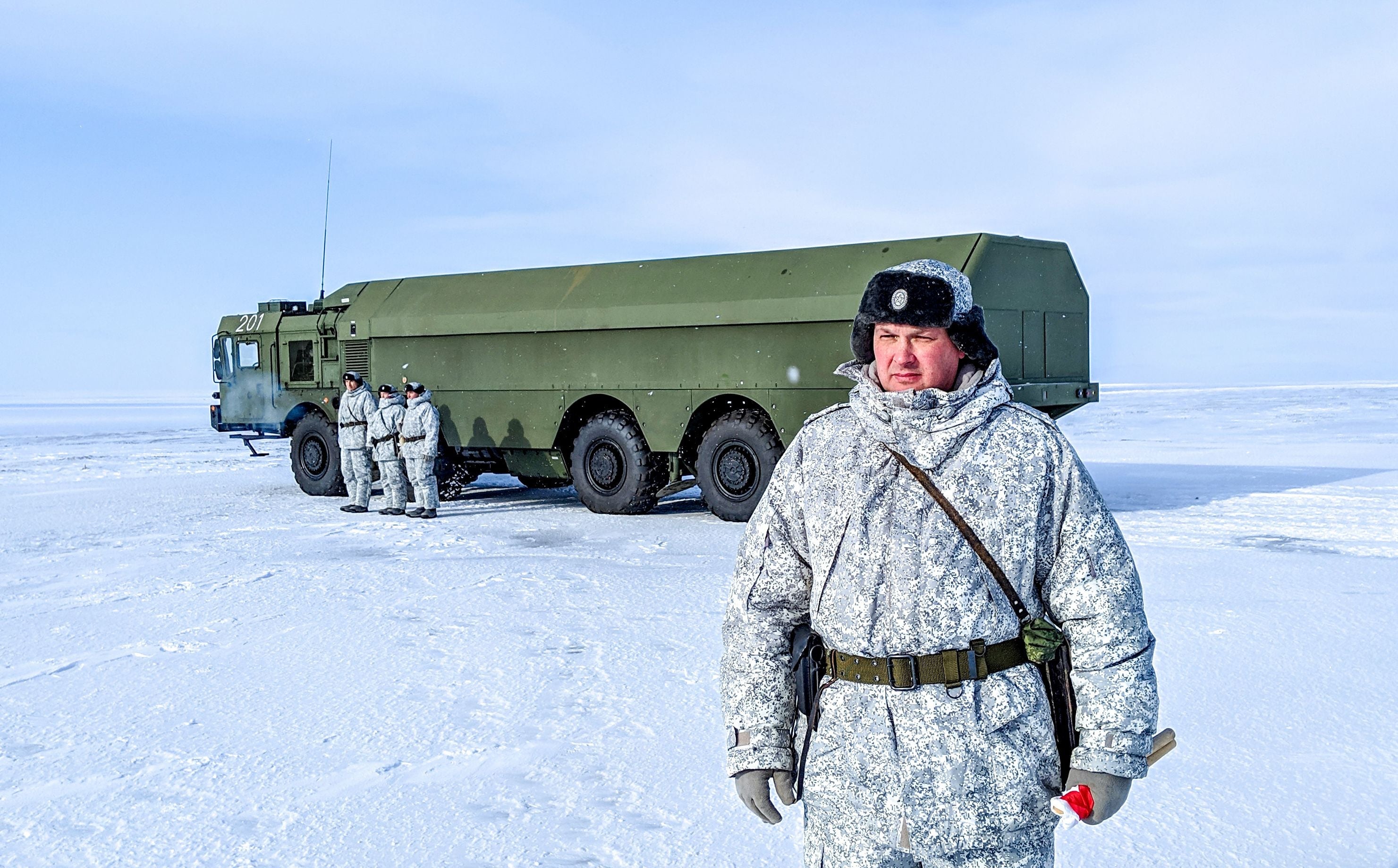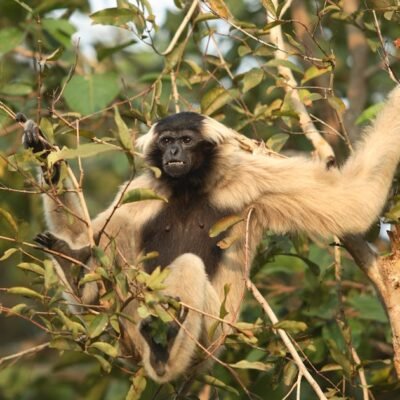
CLIMATEWIRE | For much of his career, Alaska-based scientist Vladimir Romanovsky has collaborated with colleagues back home in his native Russia on one of the most important — and enigmatic — aspects of Earth’s climate system.
They’ve been monitoring gradual shifts in Arctic permafrost, a type of carbon-rich frozen soil common in the chilliest parts of the world.
But in the last two years, these collaborations have grown cold.
On supporting science journalism
If you’re enjoying this article, consider supporting our award-winning journalism by subscribing. By purchasing a subscription you are helping to ensure the future of impactful stories about the discoveries and ideas shaping our world today.
Russia invaded Ukraine on Feb. 24, 2022 — sending shock waves around the world and disrupting international research. Sanctions and communication barriers between Russia and many other nations, including the United States, have made it increasingly difficult for scientists to work together.
Romanovsky’s project is one of many still suffering the consequences.
For the last two decades, Romanovsky and other scientists at the University of Alaska, Fairbanks — where he’s now a professor emeritus — have kept tabs on permafrost temperatures in North America and Eurasia with help from Russian scientists.
Researchers on either side of the Bering Strait have shared data, sent equipment back and forth and sometimes traveled between the U.S. and Russia to visit field sites and set up monitoring systems.
It’s crucial research. As permafrost warms and thaws, it releases large volumes of carbon dioxide and methane into the atmosphere, potentially worsening the progression of climate change and further accelerating Arctic warming.
The project didn’t halt immediately after Russia invaded Ukraine, Romanovsky said. Up until about a year ago, scientists in both countries still could communicate with one another, and the researchers in Alaska still were able to send funding to their Russian colleagues for fieldwork and data collection.
But near the beginning of 2023, the researchers in Russia began asking them to stop. It was too dangerous, Romanovsky said. The scientists were worried that accepting funding from U.S. institutes, even for research, could get them scrutinized as foreign agents.
Scientists stopped sending data from Russian field sites around the same time, for similar reasons.
A few years of data interruption won’t necessarily spell doom for the project, Romanovsky said. Permafrost research is slow by definition — it thaws gradually, often over the course of decades, and it can take many years to tease out trends.
But a long-term hole could cause problems for scientists. Russia contains some of the largest permafrost swaths in the world, with nearly two-thirds of the country’s land mass sitting atop the frozen soil. That’s a lot of data to permanently lose.
“Hopefully the gap will be not that long, and everybody hopes it will be ending soon,” Romanovsky said. “But nobody knows.”
Russian collaborations crumble
It’s not just permafrost research that’s suffering. The war has taken a toll on other scientific collaborations with Russian researchers — particularly Arctic studies, which are critical to global climate research. Russia has the longest Arctic coastline of any country in the world at 15,000 miles.
In June 2022, the White House indicated that it would begin to “wind down” scientific and technological cooperation with Russia. Government agencies should conclude collaborations that were funded prior to the invasion of Ukraine, the guidance suggested, and then should curtail their interactions with research institutions affiliated with the Russian government.
The National Science Foundation, which funds thousands of research projects annually, has followed these guidelines over the past two years. Prior to the invasion, NSF-funded projects involving Russian collaborations included studies on the changing Arctic Ocean, Arctic wildfires, permafrost, melting sea ice, marine transportation, infrastructure development and climate resilience in Arctic communities.
“As instructed in the guidance, awards made prior to the invasion were directed to wind down,” an NSF spokesperson noted in an email to E&E News. “Several projects were rescoped to continue research where feasible. Since the invasion, no new awards have been issued involving Russia.”
While the White House guidance allowed nongovernmental institutions to make their own decisions about collaborative science, some U.S. universities have proceeded to sever ties with Russian partners.
Shortly after the war began, the Massachusetts Institute of Technology decided to terminate its decadelong relationship with Skolkovo Institute of Science and Technology in Moscow. Meanwhile, multiple institutions around the U.S. announced their intent to pull all their investments in Russian assets, Inside Higher Ed reported.
Other countries have followed suit.
The Yomiuri Shimbun, a Japanese newspaper, reported last year that at least 15 joint research projects between Japan and Russia had terminated since the start of the war. Curtailed collaborations have ranged from studies on the spread of avian flu to forest management projects.
The European Union also has implemented rigorous restrictions on cooperation with Russian institutes. That means some EU-funded research initiatives no longer include Russian data — a large hole in climate and environmental monitoring systems.
The INTERACT Arctic monitoring network is a prime example, scientists have warned.
An EU initiative, INTERACT — short for International Network for Terrestrial Research and Monitoring in the Arctic — is one of the largest pan-Arctic monitoring networks in the world, with dozens of stations across multiple countries collecting information on a variety of environmental variables.
Twenty-one INTERACT stations in Russia are currently on pause — nearly a fifth of the network’s total number of research bases.
In a recent paper published in the scientific journal Nature Climate Change, researchers investigated the effects of the pause on INTERACT’s data products. They found that the network is already a bit biased to begin with — stations across the Arctic are more likely to be located in wetter and warmer areas with deeper snowpack, less vegetation and less soil carbon.
But excluding the Russian stations skews the datasets even further, the analysis found. About half of the INTERACT stations reflecting data from boreal ecosystems — including all of Siberia’s forested taiga — are found in Russia. That eliminates a large set of measurements from these unique climate zones.
“An increase in bias means a decrease in our ability to accurately describe Arctic changes,” said lead study author Efrén López-Blanco, a researcher at Aarhus University in Denmark.
If the data gaps persist for the long term, they could make it more difficult for scientists to build accurate climate models, which help them project future changes in the Arctic climate.
‘Being half blind’
Meanwhile, cooperation between Russia and other members of the Arctic Council ground to a halt shortly after the war began in 2022.
The Arctic Council facilitates collaboration on a variety of environmental issues, including conservation, pollution, climate change, fisheries and resource management. It’s also helped negotiate and oversee a number of cooperative climate and environmental research projects, such as the Arctic Wildland Fire Ecology Mapping and Monitoring Project, which tracks the area burned by wildfires each year to evaluate their impact on Arctic ecosystems and communities.
Last month, Russia threatened to fully abandon the Arctic Council and since has suspended its annual payments to the council’s budget.
Lengthening Russian data gaps comes at a time when Arctic monitoring is more important than ever, said Margaret Williams, a senior fellow at Harvard Kennedy School’s Arctic Initiative.
“People in the Lower 48 probably still don’t understand the importance of the Arctic — how it impacts planetary systems, climate patterns, birds from every continent migrate to the Arctic,” she said. “We’re all connected. Everyone is connected to the Arctic in some way.”
Research has suggested that rapid Arctic climate change — which is progressing as much as four times faster than the global average rate — may influence climate and weather patterns around the globe.
Prior to joining the Harvard Kennedy School, Williams spent much of her career working with the World Wide Fund for Nature on Arctic wildlife monitoring projects. These included collaborative international efforts to keep tabs on walrus, polar bears and other animals with populations shared between the U.S. and Russia.
Since the war began, communications with Russian government agencies, scientific institutes and nongovernmental organizations has largely ceased, she said.
“So it’s kind of like being half blind trying to understand what’s going on in the area by not having the full picture, not being able to communicate,” she said.
The communication breakdowns are taking a toll on Russian researchers as well, said Romanovsky, who still tries to keep in touch with former colleagues when he can.
Shortly after Russia invaded Ukraine, many Russian scientists openly expressed their opposition to the war. Now, two years later, they’re increasingly academically isolated.
“Some of the people I know, they really are depressed about this situation,” Romanovsky said.
Reprinted from E&E News with permission from POLITICO, LLC. Copyright 2023. E&E News provides essential news for energy and environment professionals.





